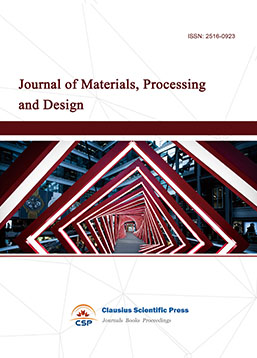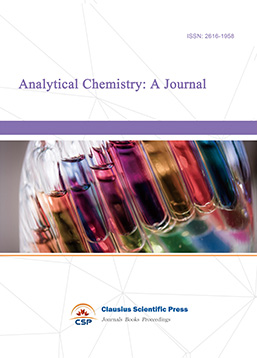Three-dimensional numerical simulation of thermal conductivity of aluminium powder/TNT fusion-cast explosives
DOI: 10.23977/mpcr.2024.040110 | Downloads: 34 | Views: 2510
Author(s)
Lixin Mu 1
Affiliation(s)
1 Environmental and Safety Engineering, North University of China, Taiyuan, China
Corresponding Author
Lixin MuABSTRACT
It is crucial for the preparation and performance study of fused-cast explosives to the quantitative determination of thermal conductivity, therefore, the search for a prediction method of their effective thermal conductivity has been of broad interest. The thermal conductivity of aluminium powder/TNT fused-cast explosives was investigated by numerical simulation, and a three-dimensional model of the particle-filled composite RVE was established based on DIGIMAT software, and a steady-state thermal analysis of the model was carried out using ANSYS Workbench software to investigate the impact of aluminium powder particles with different particle sizes and contents on the thermal conductivity and the effects of the mixed filler on the thermal conductivity enhancement effect of the composite when filled with the TNT matrix. The simulation results show that the theoretical thermal conductivity of Al/TNT increases exponentially with the increase of aluminium volume fraction; in the range of optimal particle size, it is more accessible to obtain composites with large thermal conductivity by filling large-size aluminium powders; in the case of low filler content, the numerical simulation results are in agreement with the results of the Maxwell-Eucken model in terms of the overall trend. The study shows that the described method can be used for predicting the thermal conductivity of Al/TNT composites.
KEYWORDS
Aluminium powder, TNT, Thermal conductivity, Finite element analysisCITE THIS PAPER
Lixin Mu, Three-dimensional numerical simulation of thermal conductivity of aluminium powder/TNT fusion-cast explosives. Modern Physical Chemistry Research (2024) Vol. 4: 73-80. DOI: http://dx.doi.org/10.23977/mpcr.2024.040110.
REFERENCES
[1] Guo, X., Tan, B., Huang, Z. (2018). Prediction of thermal conductivity of energy-containing polymers. Energetic material, 26(1), 80-85.
[2] He, G., Tian, X., Dai, Y., Li, X., Lin, C., Yang, Z., & Liu, S. (2019). Bioinspired interfacial engineering of polymer based energetic composites towards superior thermal conductivity via reducing thermal resistance. Applied Surface Science, 493, 679-690.
[3] Lin, C., Huang, B., Yang, Z., Gong, F., Zhao, X., Pan, L. & Guo, S. (2021). Construction of self-reinforced polymer based energetic composites with nano-energetic crystals to enhance mechanical properties. Composites Part A: Applied Science and Manufacturing, 150, 106604.
[4] Pan, L., Zhang, L., He, G. (2022). Effect of graphene microstructure on thermal conductivity of tat-based composite explosives. Journal of Weapons and Equipment Engineering, 43(9), 338-342.
[5] Pietrak, K., & Wiśniewski, T. S. (2015). A review of models for effective thermal conductivity of composite materials. Journal of Power Technologies, 95(1).
[6] Burger, N., Pachachi, A., Ferrioli, M., Lutz, M., Tognazzi, V., & Ruch, D. (2016). Review of thermal conductivity in composites: Mechanisms, parameters and theory. Progress in Polymer Science, 61, 1-28.
| Downloads: | 964 |
|---|---|
| Visits: | 64132 |
Sponsors, Associates, and Links
-
Forging and Forming

-
Composites and Nano Engineering

-
Journal of Materials, Processing and Design

-
Metallic foams

-
Smart Structures, Materials and Systems

-
Chemistry and Physics of Polymers

-
Analytical Chemistry: A Journal

-
Inorganic Chemistry: A Journal

-
Organic Chemistry: A Journal

-
Progress in Materials Chemistry and Physics

-
Transactions on Industrial Catalysis

-
Fuels and Combustion

-
Casting, Welding and Solidification

-
Journal of Membrane Technology

-
Journal of Heat Treatment and Surface Engineering

-
Trends in Biochemical Engineering

-
Ceramic and Glass Technology

-
Transactions on Metals and Alloys

-
High Performance Structures and Materials

-
Rheology Letters

-
Plasticity Frontiers

-
Corrosion and Wear of Materials

-
Fluids, Heat and Mass Transfer

-
International Journal of Geochemistry

-
Diamond and Carbon Materials

-
Advances in Magnetism and Magnetic Materials

-
Advances in Fuel Cell

-
Journal of Biomaterials and Biomechanics


 Download as PDF
Download as PDF